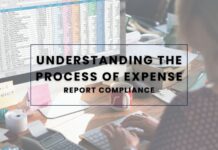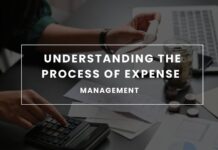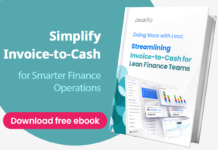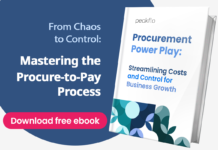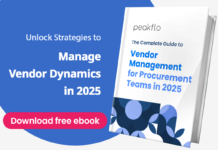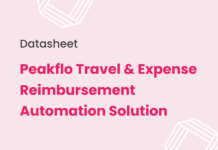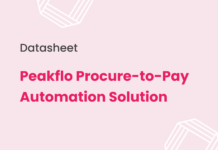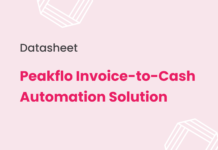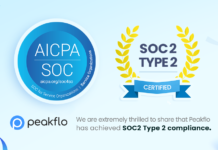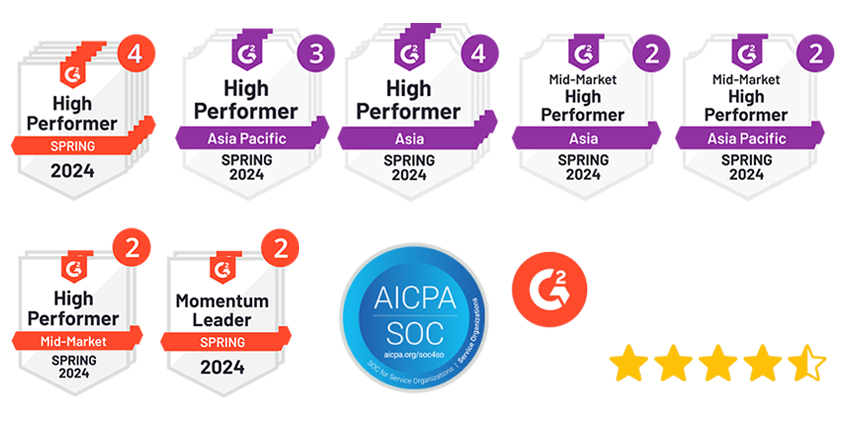Accounting in large enterprises is not perfect. Finance teams juggle massive amounts of data, yet reports take days—sometimes weeks—to finalize. Manual processes slow everything down, errors slip through, and compliance risks grow. Scaling operations only adds more pressure.
Traditional accounting simply cannot keep up. The old way of handling transactions, reconciliations, and audits is too slow, too costly, and too prone to mistakes. Finance leaders need more than just better software—they need a complete shift in how accounting works.
This is where autonomous accounting changes the game.
This guide will walk you through everything you need to know about building a framework for autonomous accounting. Whether you are looking to streamline operations, reduce risk, or future-proof your finance department, this is the roadmap to getting there.
Understanding Autonomous Accounting
What if your accounting system could handle invoices, approvals, and reports without constant checking? No more back-and-forth emails, lost paperwork, or last-minute corrections. That is what autonomous accounting does. It automates financial tasks so your team does not have to do them manually.
Let us take a look at a real-world example.
Imagine a large company goes through the month-end close process every month. Right now, employees are manually reconciling accounts, checking balances, and making sure all transactions are logged correctly. Some entries take longer than expected, while others might slip through the cracks. It can take days to wrap everything up, and any issues that pop up can hold things up even longer.
Now, picture a different approach. As soon as the transactions happens, the system automatically matches transactions to the right accounts. If something doesn’t line up, the system flags it right away. No waiting. No scrambling to find missing info. Once everything checks out, the final reports are ready automatically, and all the hard work is done for you.
This does not replace accountants. It removes the slow, repetitive work that takes up their time. Instead of spending hours on data entry, finance teams can focus on strategy and cost-saving.
Think about it. If your team had 20 extra hours each week, how would they use them?
That is the power of autonomous accounting. It makes financial operations faster, more accurate, and easier to manage.
Key Components of Autonomous Accounting
Autonomous accounting is not just another software upgrade. It is a smarter way to handle financial operations—without the delays, errors, and bottlenecks that slow businesses down. But for it to work, the right technologies need to be in place. Here is what makes it possible.
1. AI and Machine Learning
AI is like a financial assistant that never sleeps. It scans real-time transactions, spots patterns, and flags issues before they become real problems. If something does not look right, it alerts the team immediately. Over time, it gets smarter, learning from past data to improve accuracy and predictions.
2. Robotic Process Automation (RPA)
Some tasks just do not need a human touch. RPA takes over invoice processing, reconciliations, and data transfers between systems. It does them instantly and without mistakes. That means finance teams spend less time on manual work and more time on planning and strategy.
3. Cloud-Based Accounting
Nobody likes being stuck with outdated data. With cloud-based accounting, financial records are always up-to-date and accessible from anywhere. Reports update in real-time, so teams no longer have to wait for month-end summaries or deal with missing numbers. Everything is right there when they need it.
4. Compliance and Audit Tracking
Nobody wants to scramble during an audit. Autonomous accounting automatically applies tax codes, tracks every transaction, and keeps records organized. When regulators ask for reports, businesses do not have to dig through files—everything is already documented and ready.
5. Real-Time Financial Insights
Making big decisions with old data is risky. Autonomous accounting updates numbers instantly. Leadership can see cash flow, expenses, and revenue in real-time, helping them react quickly and stay ahead of financial risks.
6. Predictive Analytics for Planning
Financial planning should not be a guessing game. AI-driven analytics analyze trends, spending patterns, and market conditions to forecast future costs and revenue. Businesses can plan smarter, cut unnecessary expenses, and prepare for risks before they happen.
7. Blockchain for Security
Trust is everything in finance. Blockchain ensures that transactions are secure, transparent, and unchangeable. Every transaction is recorded permanently, preventing fraud and making audits easier. This is especially important for enterprises managing payments across multiple vendors and suppliers.
How to Build an Autonomous Accounting Framework?
Switching to autonomous accounting is not just about using automation. It is about building a system that runs smoothly, with fewer errors and faster results. To make it work, businesses need a step-by-step approach. Here is how.
1. Review Your Current Accounting Process
Before making changes, understand what is slowing you down. Are invoices taking too long to process? Are errors causing delays? Look at where manual work is creating problems. These are the areas that need automation first.
2. Set Clear Automation Goals
Every business has different challenges. Some struggle with slow approvals, while others deal with late financial reports or compliance risks. Define what you want to improve. Do you need real-time financial data? Fewer manual entries? Faster closing times? Knowing your goals helps you choose the right tools.
3. Choose the Right Technology
A strong autonomous accounting framework needs the right mix of automation tools. Each plays a key role in making the system faster and more reliable:
- AI and Machine Learning to analyze data, catch errors, and make smart predictions
- Robotic Process Automation (RPA) to handle repetitive tasks like invoice processing and reconciliations
- Cloud-Based Accounting for instant access to financial data from anywhere
- Blockchain Technology to ensure security and prevent fraud
- Compliance Automation to track tax rules and keep audit records ready
Pick solutions that integrate with your existing systems to avoid disruptions and extra costs.
4. Start Small and Automate High-Impact Tasks First
Do not try to automate everything at once. Begin with the biggest time-wasters. Start with invoice approvals, payment processing, or reconciliations. Once these are running smoothly, expand automation to forecasting, compliance, and reporting.
5. Train Your Finance Team and Redefine Roles
Automation does not replace people—it frees them from boring, repetitive work. Employees need to understand how the new system benefits them so they can adapt. Train them on the tools, show them the time savings, and help them shift to higher-value tasks like financial strategy and risk management.
6. Connect All Financial Systems for a Smooth Workflow
For full automation, accounting systems must work together. Enterprise resource planning (ERP), payroll, procurement, and tax systems should all share data instantly. This reduces errors, speeds up approvals, and ensures every department works with the same numbers. No more lost transactions or manual updates.
7. Monitor and Improve Over Time
Automation is never “done.” It needs regular monitoring to keep it working at its best. Track performance, spot inefficiencies, and make adjustments. AI-driven analytics can help identify where improvements are needed, ensuring your system stays fast, accurate, and cost-effective.
8. Keep It Future-Proof
Technology and regulations change fast. Your autonomous accounting framework should be able to adapt. Stay updated on compliance rules, security risks, and new automation tools. Regularly review and upgrade your system so your business stays ahead.
Benefits of Autonomous Accounting
Accounting should not slow businesses down. Here is what happens when companies switch to automation.
1. Faster Accounting, No More Delays
Manual processes take time. Invoices sit in approval queues. Data entry mistakes cause setbacks. Reports take weeks to finalize. Autonomous accounting eliminates these delays. Transactions are processed instantly, reports update in real-time, and financial close happens faster than ever.
2. Lower Costs, Fewer Mistakes
Fixing financial mistakes is expensive. Duplicate payments, incorrect tax filings, and human errors add up fast. Autonomous accounting removes these risks. AI handles calculations, reconciliations, and approvals with near-perfect accuracy. This reduces wasted money, prevents penalties, and keeps finances on track.
3. Instant Access to Financial Data
Many companies make decisions using old numbers. By the time reports are ready, the financial situation has already changed. With autonomous accounting, cash flow updates instantly, revenue reports refresh in real-time, and spending trends are always visible. Leaders get the right data at the right time to make smart decisions.
4. Stronger Security and Fraud Protection
Fraud is a major risk for large enterprises. Unauthorized transactions, data breaches, and payment fraud cost businesses billions. Autonomous accounting uses AI and blockchain technology to verify transactions and flag suspicious activity. Every financial action is tracked, recorded, and protected from tampering.
5. No Compliance Headaches
Tax laws and regulations change all the time. Missing tax updates can lead to fines, penalties, and legal trouble. Autonomous accounting keeps financial records organized, applies tax codes automatically, and generates audit-ready reports on demand. Businesses stay compliant without stress.
6. More Time for High-Value Work
Finance teams should not spend their days chasing invoices, fixing errors, and filling out spreadsheets. Autonomous accounting frees them up for bigger priorities. Instead of wasting time on routine tasks, they can focus on financial strategy, cost-saving, and risk management.
7. Scales Effortlessly as Business Grows
The bigger the business, the more financial data it has to manage. More transactions. More vendors. More reporting. Manual accounting cannot keep up. Autonomous accounting scales without extra staffing or expensive upgrades. No matter how fast the company grows, automation handles the workload.
The Strategic Role of Accountants in Autonomous Accounting
If accounting runs on automation, what happens to accountants? Some think AI will replace finance teams. That is not true. Instead of handling routine tasks, accountants now focus on strategy, risk management, and financial growth. They use automation as a tool, not a replacement. Here is how their role is changing.
1. From Data Entry to Data Analysis
Accountants used to spend hours entering numbers. Now, AI does that instantly. Instead of typing in data, accountants analyze it, find cost-saving opportunities, and spot financial risks before they grow.
Example: A company’s expenses suddenly rise. Instead of searching through invoices, an accountant pulls an AI-generated report. The system shows a supplier increased prices without warning. The accountant catches it early, negotiates a better deal, and saves the company thousands.
2. Catching Financial Risks Before They Become Problems
Automation is fast, but it still needs human oversight. AI spots patterns, but accountants make judgment calls. They review transactions, check for fraud, and ensure compliance. If something seems off, they step in before damage is done.
Example: An AI system flags a large, urgent payment. It looks normal, but an accountant takes a second look. The details do not match up. After investigating, they find it is a fraudulent attempt. Without their review, the company could have lost a significant amount of money.
3. Helping Businesses Make Smarter Decisions
Accounting is no longer just about tracking money—it is about growing the business. Accountants now use real-time financial data to help leaders make faster, smarter choices.
Example: A CFO is considering opening a new office. Instead of waiting weeks for financial reports, an accountant pulls real-time cash flow data. The numbers show they have enough funds to expand without financial strain. The company moves forward confidently, backed by accurate insights.
4. Simplifying Compliance and Reducing Stress
Tax laws change often, and mistakes are costly. Instead of tracking rules manually, accountants now use AI-powered compliance tools. These systems update tax codes, generate reports, and keep records audit-ready. Accountants focus on long-term tax strategies instead of paperwork.
Example: A company operates in multiple countries, each with different tax laws. Instead of researching each regulation, an accountant relies on AI agents that update in real-time. They review the recommendations, adjust the strategy, and ensure the company stays compliant without last-minute panic.
Most Common Challenges in Autonomous Accounting (with Solutions)
Automation makes accounting faster and more accurate, but it comes with challenges. If businesses do not plan properly, they may face roadblocks that slow things down. The good news? Every challenge has a solution. Here is how companies can overcome common obstacles and make automation work.
1. Employees Worry About Losing Their Jobs
People do not like change, especially when it feels like a threat. Some accountants think automation will take over their roles. Others feel stressed about learning new systems.
Solution: Automation does not replace accountants—it helps them do more valuable work. Instead of entering data, they analyze it, find patterns, and help businesses make smarter financial decisions. Companies should train employees on how to use automation tools to make their jobs easier. Once they see the benefits, they will be more open to change.
2. Old Systems Do Not Work with New Technology
Many businesses still use older accounting software that was not built for automation. If new tools do not connect with existing systems, data gets stuck, processes break down, and automation cannot work properly.
Solution: Businesses should choose automation tools that integrate with their current accounting and ERP systems. Many modern platforms offer API connections that allow different software to work together. Cloud-based accounting systems are also a good option since they sync data instantly and remove the need for manual updates.
3. Security Risks and Cyber Threats
Automation handles large amounts of financial data. If security is weak, hackers can steal sensitive information or commit fraud.
Solution: Businesses must protect financial data with strong security measures. This includes data encryption, multi-factor authentication, and AI-powered fraud detection. Blockchain technology can also help by creating secure transaction records that cannot be altered. Regular security audits ensure systems stay protected from new threats.
4. Automation Can Still Make Mistakes
Automation is fast, but it is not perfect. If incorrect data enters the system, errors can spread quickly. A small mistake in tax calculations or invoice approvals can turn into a big financial problem.
Solution: Automation should not run without oversight. AI-powered validation tools check financial data for errors before processing. Accountants should also review reports and transactions regularly to make sure everything is accurate. A combination of automation and human oversight keeps accounting reliable.
5. High Upfront Costs Can Be a Concern
Switching to autonomous accounting requires an investment. Some companies worry about the cost and whether it is worth it.
Solution: Businesses do not have to automate everything at once. Start small. Focus on the most time-consuming tasks, like invoice processing and reconciliations. Once companies see how much time and money they save, they can expand automation step by step. Many cloud-based solutions also offer flexible pricing, so businesses can scale at their own pace.
Peakflo’s Agentic Workflow: Revolutionizing Autonomous Accounting
Peakflo Agentic Workflows are a game-changer for your accounting team. They help automate tasks like financial close, bank reconciliation, and audits. This makes everything faster, more accurate, and less time-consuming.
Let’s break down how Peakflo helps in these key areas:
1. Faster Financial Close
The month-end financial close is usually a slow and detailed process. It involves balancing accounts, checking for mistakes, and creating reports. Peakflo AI handles much of this work, making it quicker and more accurate.
- How Peakflo Helps with Financial Close:
- Automatic Reconciliation: Peakflo instantly matches transactions and generates reports.
- Instant Reports: Once the data is checked, reports are ready right away—no more waiting.
- Error Detection: If something doesn’t match, Peakflo flags it instantly, so it can be fixed quickly.
2. Easier Bank Reconciliation
Bank reconciliation can take a lot of time. Your team must match bank statements to company records, which can be confusing and full of mistakes. Peakflo AI automates this process, making it faster and more accurate.
- How Peakflo Helps with Bank Reconciliation:
- Automatic Matching: Peakflo AI instantly matches bank transactions with internal records.
- Real-Time Updates: Peakflo keeps your records updated as transactions happen.
- Instant Reports: After matching transactions, Peakflo AI creates the reconciliation report automatically.
3. Speeding Up Audits
Auditing financial records is a detailed job. It involves checking a lot of transactions, which can take a long time. Peakflo AI automates many audit tasks, making the process faster and easier.
- How Peakflo Helps with Audits:
- Automatic Data Capture: Peakflo gathers all the audit-related data and organizes it for easy access.
- Clear Audit Trail: Every action is logged, making it easy to follow the audit trail.
- Faster Audits: With repetitive tasks automated, auditors can focus on important analysis instead of checking every transaction.
4. Detecting Anomalies in Real-Time
Finding errors in transactions can take a lot of time. Peakflo AI detects unusual patterns and discrepancies quickly, so your team can take action right away.
- How Peakflo Helps with Anomaly Detection:
- Instant Error Detection: Peakflo AI flags transactions that don’t fit the usual patterns.
- Real-Time Alerts: Your team gets notifications immediately when something unusual happens.
- Customizable Parameters: Peakflo AI learns from your past data and improves over time, becoming even more accurate.
Conclusion
We have walked through how tedious and error-prone traditional accounting can be. Now, picture a world where everything is automated—faster approvals, accurate payments, and no more chasing invoices. With Peakflo’s Agentic Workflows, this can be your reality. It is time to free up your team’s time, reduce mistakes, and take control of your finances.
Peakflo simplifies and speeds up every part of the accounting process. Ready to see how it works for you? Book a demo tour today and discover how Peakflo can transform your accounting process.
Don’t wait—let’s make your accounting faster, smarter, and more efficient today!


